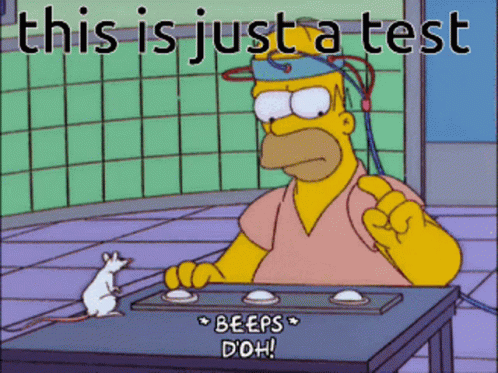If you have a startup idea, you need to validate it before you invest your time and resources into it. The best way to do this is by creating a Minimum Viable Product (MVP). An MVP is a basic version of your product that you can use to test your idea and gather feedback from potential customers.
Creating an MVP can help you de-risk your idea and identify any potential issues before you invest too much time and money into your startup. With an MVP, you can quickly test your idea in the market and see if there is demand for your product. You can also identify any flaws in your idea and make adjustments before you invest too much into development.

In this article, we will go over the steps you need to take to validate your startup idea with an MVP. We will cover how to define your problem statement, identify your target audience, and create a basic version of your product. By following these steps, you can create an MVP that will help you validate your idea and move forward with confidence.
What is a Minimum Viable Product (MVP)?
If you're an entrepreneur or startup founder, you've probably heard the term "Minimum Viable Product" or MVP. But what exactly is an MVP?
Simply put, an MVP is the most basic version of your product that you can create and still solve the problem your target audience is facing. It's a product with just enough features to satisfy early adopters and provide feedback for future development.
Eric Ries, the author of "The Lean Startup," defines an MVP as "that version of a new product which allows a team to collect the maximum amount of validated learning about customers with the least effort."
Creating an MVP enables you to test your startup idea without investing too much time, money, or resources. It's a way to validate your idea and ensure that there's a market for your product before you invest more heavily in development.
Why Validate Your Startup Idea with an MVP?
Validating your startup idea before launching it is crucial to ensure that it meets the requirements of the target audience and the market. This validation process can save you a lot of time, money, and effort in the long run. One of the most effective ways to validate your startup idea is through a Minimum Viable Product (MVP).
An MVP is a simplified version of your product that contains only the core features necessary to solve the problem for your target audience. The purpose of an MVP is to test your assumptions and gather feedback from your potential customers. By launching an MVP, you can quickly learn what works and what doesn't work, and make necessary adjustments before investing more resources into your product.
Using an MVP to validate your startup idea can help you:
- Reduce the risk of failure: By testing your assumptions and gathering feedback early on, you can avoid investing a lot of resources into a product that won't succeed in the market.
- Save time and money: An MVP is a cost-effective way to validate your startup idea before investing a lot of money into development and marketing.
- Improve your product: By gathering feedback from your potential customers, you can make necessary adjustments to your product and ensure that it meets the needs of your target audience.
- Attract investors: Investors are more likely to invest in a startup that has validated its idea and has a clear understanding of its target audience and market.

Using an MVP to validate your startup idea is a smart and effective way to ensure that your product meets the needs of your target audience and has a higher chance of success in the market.
How to Build an MVP
Building a minimum viable product (MVP) is all about creating a working prototype of your startup idea as quickly as possible. Doing so enables you to test your assumptions and optimize your idea for product/market fit based on user feedback from your early adopters. Here are the four steps to building your MVP:
Step 1: Identify Your Target Audience
The first step in building an MVP is to identify your target audience. Who are the people that you're trying to serve with your product? What are their pain points? What are their needs and wants? Once you've identified your target audience, you can start to develop a better understanding of their needs and preferences. This will help you to build an MVP that is focused on solving their problems and meeting their needs.
Step 2: Define Your MVP's Core Features
The next step in building an MVP is to define the core features that your product needs to have in order to solve your target audience's problems. These features should be the most important and basic ones that your product needs to function. The idea is to build the main idea of your product first and the less necessary features at a later stage. This enables you to develop a product that is focused on solving your target audience's most pressing problems.

Step 3: Create a Prototype
Once you've defined your MVP's core features, it's time to create a prototype. A prototype is a working model of your product that you can use to test your assumptions and get feedback from your target audience. The prototype doesn't have to be perfect or polished, but it should be functional enough to give your target audience a good idea of what your product does and how it works.
Step 4: Test Your MVP
The final step in building your MVP is to test it with your target audience. This is where you'll get feedback on your product and learn what works and what doesn't. You can use a variety of methods to test your MVP, including user surveys, focus groups, and A/B testing. The goal is to get as much feedback as possible from your target audience so that you can refine your product and make it better.
By following these four steps, you can build an MVP that is focused on solving your target audience's problems and meeting their needs. This will enable you to test your assumptions and optimize your product for product/market fit based on user feedback from your early adopters.
Mistakes to Avoid When Building an MVP
When building an MVP, it's important to avoid common mistakes that can lead to failure. Here are some mistakes to avoid:
- Overcomplicating your MVP: One common mistake is to add too many features, functionalities, or integrations to your MVP. This can make your product more complex and harder to use, which can turn off potential customers. Instead, focus on creating a simple, user-friendly MVP that solves a specific problem.

- Not defining your project scope and goals: If you don't have a clear understanding of what you want to achieve with your MVP, you risk losing focus and direction. Before you start building your MVP, define your project scope and goals, and make sure they align with your overall business strategy.
- Ignoring user feedback: Your MVP is designed to test your assumptions and validate your idea, so it's important to listen to user feedback. If you ignore user feedback, you risk building a product that no one wants or needs. Make sure you collect feedback from your users and use it to improve your MVP.
- Not having a strong product management and software engineering team: Building a successful MVP requires a strong product management and software engineering team. If you don't have the right team in place, you risk building a product that is not scalable or future-proof. Make sure you have a team that understands advanced technologies and can build a product with scalability in mind.
- Not validating your MVP: One of the biggest mistakes you can make is to assume that your MVP will be successful without testing it. Before you launch your MVP, make sure you validate it by testing it with real users. This will help you identify any issues or problems and make improvements before you launch.
By avoiding these common mistakes, you can increase your chances of building a successful MVP that validates your startup idea and helps you bring your product to market.
Conclusion
Validating your startup idea with a minimum viable product is a crucial step towards building a successful business. By creating an MVP, you can test your assumptions, gather feedback, and make informed decisions about the direction of your product.
Remember that an MVP is not a final product, but rather a starting point for further development. It should be simple, cost-effective, and focused on solving a specific problem for your target audience.
Throughout the MVP validation process, it's important to stay open-minded and flexible. Be willing to pivot or make changes based on feedback and data, and don't be afraid to scrap an idea that isn't working.
Make sure to track your metrics and measure the success of your MVP. Use this data to inform your next steps and iterate on your product.
Creating a minimum viable product is a valuable tool for any startup looking to validate their idea and build a successful business. By following the steps outlined in this article, you can increase your chances of success and create a product that truly meets the needs of your target audience.








